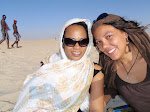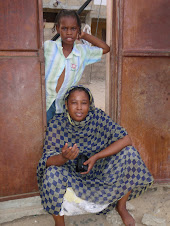I am currently in the end stages of the World Map Project with my students at ES Rugabano secondary school in the Karongi District. This project was started by RPCV Barbara Jo White in 1989 and now her maps can be found all over the world. It is basically a student centered project that uses the grid method to create a large scale map of the world. The grid method – think hundreds of tiny squares with a guide that tells you what shapes go into each one – makes any non-artist the creator of professional looking works.
Though it started slow, this has been one of my favorite projects of my Peace Corps service. I have loved watching and assisting my students’ problem solving abilities to create their own world map. After getting the approval from the director and money for supplies from the manager the rest was pretty easy. The slowest part was getting the grid on the wall; drawing 60 straight horizontal and vertical lines can be tedious. The drawing of the map with pencils went the fastest, but the best part has been the painting. I can’t explain the amazement in my students’ eyes as they followed my instructions and watched blue and yellow mix to green. They begged me and the geography teacher helping me for more days to work. Now we are averaging a color a day, 3 days a week and we can see the finish line.
One thing I cherish most about this project is watching their minds open. One student excitedly came up to me with his ready-made stencils (hand cut from paper) suggesting we use them for more detailed areas like the sun in the Rwandan flag , the words above the map and even the compass at the bottom. Another showed me his notebook with a tiny version of the map, explaining the grid process can be shrunk down too. I marvel at the groups that gather in front of the half-finished map, pointing out countries and arguing about the size of Russia. I would recommend this project to all PCVs and suggest that you let the students be in charge of their own learning and discoveries by acting as a facilitator rather than a teacher. With a few bumps, they will get it – and it’s a great thing to watch. Twagirayesu Verier, aka DJ Lencho Ficho, said, “Our map helps us to know everywhere we didn’t see before – only to know a place and capital of ALL countries.” And that’s good enough for me.
- Paint (black, white, red, yellow, blue)
- Brushes (I found that hair dye brushes for men are small enough for detailed painting – we also used sticks with frayed ends. Be creative.)
- Plastic bottles (cut in half for mixing and carrying around)
- Large ruler
- String
- Atlas
- Newspaper (to cover floor and working spaces)
- Petrol (to mix with paint to make it smoother and for cleaning up)
- Radio (music to make the environment more relaxed)





